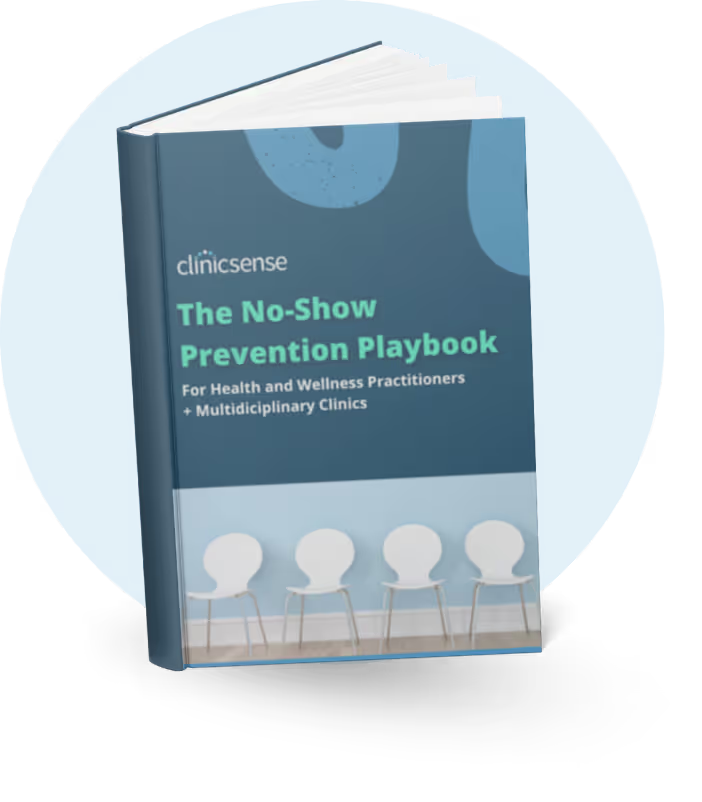Industry Insights
June 28, 2023
.avif)
A career in health & wellness can be both rewarding and lucrative. If you have a passion for living a healthy lifestyle and helping others, a career in this industry might be a good fit. In this article, we’ll explore in-demand health & wellness careers, what they entail, and educational requirements.
Ready to figure out which career path is right for you? Let’s take a look!
The health & wellness industry is growing rapidly. A report by McKinsey found 42% of people consider wellness a top priority and estimates the wellness market at $1.5 trillion. Here are the top careers in health & wellness:
Want to spend your days making people feel good? Massage therapy is a growing field with a positive career outlook. According to the Bureau of Labor Statistics, employment of massage therapists is projected to grow 20% from 2021 to 2031 as awareness about the benefits of massage therapy spreads. That’s much faster than most occupations.

Massage therapists treat muscles and soft tissues manually to relieve pain, reduce stress, and improve overall wellness. They use various techniques like Swedish massage, deep tissue, sports massage, trigger point therapy, and Shiatsu. They also take client health histories, assess needs, and develop treatment plans.
To become a massage therapist, most states require you to complete a postsecondary education program of 500-1000 hours at an accredited school. After completing the program, you must pass a licensing exam. You can find local requirements for getting a massage therapy license using the AMTA’s state-by-state guide.

Interested in food as medicine? Nutrition and dietetics is an excellent career path with high demand and salaries. The rise of preventable diseases like hypertension and cardiovascular disease is fueling the demand for nutrition experts.
Nutritionists help people improve their health through their diet. This often involves guiding people through food choices, meal planning, and preparing food. They help clients build healthy food habits to achieve goals like weight loss, managing medical conditions, or improving athletic performance.
*It’s important to note that the word “nutritionist” is often used interchangeably with dietitian, but they are not the same thing. Dietitians are nutritionists with more extensive training and certifications, who are qualified to work in more clinical settings.
A dietitian provides advice on healthy eating habits and designs customized diets for clients based on their unique needs and challenges. They assess nutritional needs, create meal plans, and offer counseling. Additionally, they can treat specific health conditions, such as eating disorders, by recommending specific foods and dietary changes.
According to GoodRx, nutritionists may not require certification, but some states mandate certification from specific organizations. The Board for Certification Nutrition Specialists and Clinical Nutrition Certification Board are two pathways to becoming certified. Certification requirements include a graduate-level degree, relevant coursework, clinical experience, and passing an exam.
You can find state-by-state nutritionist requirements in this guide.
To become a dietitian, there are three main pathways: a dietetic internship, a coordinated program, or a future education model graduate program. All of these require a bachelor's degree and completion of an ASCEND-approved program, with internships lasting a minimum of 1,000 to 1,200 hours.
Along with nutritionist and dietitians, holistic medicine is a popular career to consider - holistic medicine is an umbrella term referring to the treatment of the whole body oftentimes using techniques such as TCM (Traditional chinese medicine) acupuncture, nutrition, sound healing and more.
ClinicSense's software supports holistic medicine practitioners thanks to the flexible SOAP notes. So practitioners can create a custom note and intake for for each treatment they offer.

Want to help people recover from injuries and stay active? The need for physical therapists is growing at a rate of 17%. This is thanks to aging baby boomers experiencing mobility issues and chronic conditions. Advances in medical technology and the growing awareness of the benefits of physical therapy are also increasing demand.
Physical therapists help patients improve their mobility and manage pain caused by medical problems or injuries. They evaluate patients' conditions and create customized treatment plans using a variety of techniques such as exercise, manual therapy, and equipment. PTs often aim to reduce the need for surgery and prescription drugs.
To become a physical therapist, a Doctor of Physical Therapy (DPT) degree is required after completing a 4-year bachelor's degree. After graduation, you must pass the National Physical Therapy Examination and meet state licensure requirements, which vary. Some DPT programs may also require prerequisite courses in anatomy, physiology, and biology.
Did you know ClinicSense offers specialized physical therapy software to help PT's support their patients? It offers flexible scheduling and SOAP notes - plus a HIPAA compliant EMR to ensure practitioners say compliant at all times.

Would you have fun making clients look good and feel better? Estheticians have a promising job outlook, low-stress work environment, high income potential, and various career opportunities in skincare. The popularity of non-invasive cosmetic treatments is on the rise. Estheticians typically work in spas, salons, or medical offices.
Estheticians specialize in skincare. They’re trained to analyze and improve the health and appearance of their clients' skin. Estheticians offer a range of services, such as facials, chemical peels, hair removal, makeup application, and skincare consultations. They may also provide advice on home skincare regimens and products.
Most states require anywhere from 150 to 600 hours of coursework and practical training. The first step to becoming a licensed esthetician is to get the necessary training from an accredited school. After completing the program, you must pass a state licensing exam to obtain your license.
Here’s a state-by-state guide to esthetician licensing requirements.

Want to get paid to workout? High demand careers in the fitness industry include personal trainers, group fitness instructors, wellness coaches, and sports performance specialists. Other in-demand roles include athletic trainers, strength and conditioning coaches, and exercise physiologists. With the growing interest in health and fitness, the demand for professionals in these fields is expected to continue to increase.
Becoming a fitness professional typically involves the following steps:
There are many organizations that offer fitness certifications, such as the American Council on Exercise (ACE), the National Academy of Sports Medicine (NASM), and the National Strength and Conditioning Association (NSCA). Choose a certification that is recognized by employers in your area and aligns with your career goals.

Can you imagine yourself relieving people’s pain without drugs? More people and healthcare systems are adopting non-invasive treatment for chronic pain. Increasing prescription drug abuse has led to an increase in chiropractic care as a common drug-free pain relief treatment, according to Grand View Research.
Chiropractors diagnose and treat conditions related to the musculoskeletal and nervous systems, with an emphasis on the spine. They use a hands-on approach to manipulate or adjust the spine and other joints, aiming to improve joint function, alleviate pain, and promote overall health.
To become a chiropractor, you need 3-4 years of undergraduate study before enrolling in a Doctor of Chiropractic degree program. After completing the program, you must pass the National Board of Chiropractic Examiners exams, and obtain licensure in your state. Some chiropractic programs require a bachelor's degree.
Did you know that ClinicSense has custom chiropractic software build to help chiro's support their patients needs?

Want to treat the whole person, not just symptoms? Osteopathy is a drug-free, non-invasive manual therapy that aims to improve health across all body systems. Osteopaths can have a diverse career path and work in a variety of settings. As awareness of this alternative therapy grows, more people are seeking out osteopathic medicine physicians (DOs).
Osteopathic physicians treat and prevent illness through the manipulation and massage of bones, joints, and muscles. They help restore the body's natural balance and promote healing. Osteopaths often work with patients who have musculoskeletal problems, such as back pain or injuries.
To become an osteopath, you will need at least 9 years of training. You must first complete a bachelor's degree. Then, attend a Doctor of Osteopathy (DO) program, complete clinical rotations, and obtain a license to practice in your state.
Did you know that ClinicSense serves Osteopaths with custom Osteopathy software? Build to help practitioners support the patients full body.
Want to spend your days helping people overcome their limitations? Demand for occupational therapists is expected to increase as the aging population grows and more individuals with disabilities require their services. Additionally, there is an increasing recognition of the value of occupational therapy in a variety of settings, such as mental health facilities and schools
Occupational therapists (OTs) help people improve their ability to perform everyday tasks and improve their quality of life. OTs work with people experiencing illness, disability or are recovering from surgery. They focus on improving motor skills, adapting a person’s environment, and providing practical advice to patients and caregivers.
To become an occupational therapist, you need to earn a master's degree in occupational therapy from an accredited program. Then, you must complete fieldwork and pass the National Board of Certification in Occupational Therapy (NBCOT) exam. All states require occupational therapists to be licensed. Additional requirements vary by state.
ClinicSense can streamline your health & wellness business by offering appointment scheduling, client management, SOAP notes, invoicing, online payments, and marketing tools. It simplifies administrative tasks, improves client experience, and boosts your efficiency and productivity.
Depending on your profession, different ClinicSense tools might be more valuable to your business.
No matter what health & wellness career you choose, the right software will make your work-life a whole lot easier.


.avif)
.avif)
.avif)









For 14 days